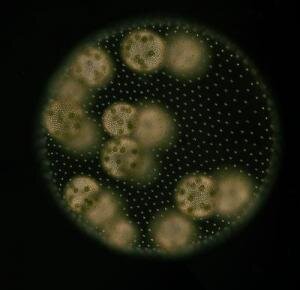Clues from Green Algae on the Origin of Males and Females
A multicellular green alga, Volvox carteri, may have finally unlocked the secrets behind the evolution of different sexes.
A team led by researchers at the Salk Institute for Biological Studies has shown that the genetic region that determines sex in Volvox has changed dramatically relative to that of the closely related unicellular alga Chlamydomonas reinhardtii.
Their findings, which will be published in the April 16th issue of the journal Science, provide the first empirical support for a model of the evolution of two different sexes whereby expansion of a sex-determining region creates genetic diversity followed by genes taking on new functions related to the production of male and female reproductive cells termed gametes.
"Until now, sex-determining chromosomes had generally been viewed as regions of decay, steadily losing genes that are not involved in sexual reproduction," explains James Umen, Ph.D., assistant professor in the Plant Molecular and Cellular Biology Laboratory at the Salk Institute, who led the team conducting the study. "Our study shows the opposite-that such regions can expand and generate new genetic material much more rapidly than the rest of the genome."
Most multicellular organisms such as plants and animals have two distinct sexes with females producing large immotile eggs and males producing small motile sperm.
While unicellular organisms can also reproduce sexually, the two sexes of single-celled species are typically indistinguishable from each other and are thought to represent an ancestral or early evolutionary state. However, the large distances that separate plants or animals from their closest unicellular relatives have precluded understanding the evolutionary transition to male-female dimorphism.

"The image shows a vegetative female colony. Volvox carteri forms spherical colonies, which are composed of 2,000 to 4,000 individual cells embedded in an extracellular matrix. During non-sexual reproduction, so-called gonidia in both male and female (pictured) colonies produce juvenile colonies through repeated division. (Credit: Courtesy of the Umen laboratory, Salk Institute for Biological Research)"
Source: Salk Institute
|